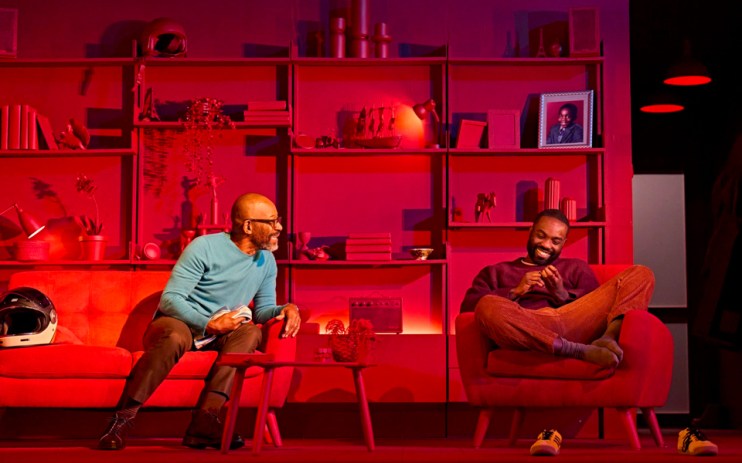A Number at the Old Vic review: Cloning drama never seems to age

What is the value of a human life? What makes us who we are? How can we weigh our good deeds against our bad? Does any of this really matter? A Number asks these heavy questions with a remarkable lightness of touch.
Among the most commonly-performed of Caryl Churchill’s plays, it’s a blistering hour and change of philosophical intrigue and familial angst. Written in 2002 when Dolly the Sheep (1996-2003) was still alive and chewing, it opens with an awkward conversation between father and son Salter and Bernard (Lennie James and Paapa Essiedu). It transpires that Bernard has been cloned and that “a number” of Bernards are now walking the earth, all part of some shady social experiment. Salter at first seems full of righteous indignation, but as Bernard pulls at the loose threads in his story a sadder, more horrifying narrative begins to take shape.
The text is wonderful, its family drama far more than a framework for the Big Ideas it explores. It’s sparse and spiky, full of lines of dialogue that trail off mid-way through, each one full of unspoken meaning.
It’s performed against Es Devlin’s super-stylish backdrop of an all-red apartment – walls, sofas, floors, radiators – that leans into the unreality of the piece and lends it the slightly kitsch air of an episode of The Twilight Zone. Scene changes, meanwhile, use some inventive sleight of hand that allows characters to change costume in the blink of an eye, although the blinding lights that help facilitate this do become a little obnoxious.
It’s hard not to compare director Lyndsey Turner’s production to Polly Findlay’s version at the Bridge Theatre a couple of years ago. Where that play seemed to foreground Roger Allam’s Salter, here Bernard carries more weight, with Essiedu brilliantly switching between Salter’s meek, likable son and a second, more sinister character.
The word ‘timeless’ is thrown about too often but it’s relevant here – this play hasn’t aged a day since 2002 and I imagine it will have the same rapier edge in another 20 years.
